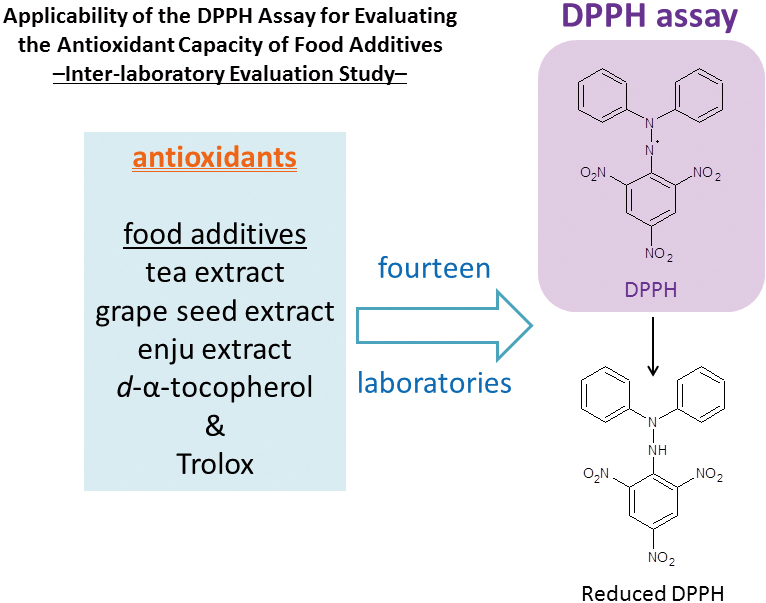Abstract
An inter-laboratory evaluation study was conducted in order to evaluate the antioxidant capacity of food additives by using a 1,1-diphenyl-2-picrylhydrazyl (DPPH) assay. Four antioxidants used as existing food additives (i.e., tea extract, grape seed extract, enju extract, and d-α-tocopherol) and 6-hydroxy-2,5,7,8-tetramethylchroman-2-carboxylic acid (Trolox) were used as analytical samples, and 14 laboratories participated in this study. The repeatability relative standard deviation (RSDr) of the IC50 of Trolox, four antioxidants, and the Trolox equivalent antioxidant capacity (TEAC) were 1.8 – 2.2%, 2.2 – 2.9%, and 2.1 – 2.5%, respectively. Thus, the proposed DPPH assay showed good performance within the same laboratory. The reproducibility relative standard deviation (RSDR) of IC50 of Trolox, four antioxidants, and TEAC were 4.0 – 7.9%, 6.0 – 11%, and 3.7 – 9.3%, respectively. The RSDR/RSDr values of TEAC were lower than, or nearly equal to, those of IC50 of the four antioxidants, suggesting that the use of TEAC was effective for reducing the variance among the laboratories. These results showed that the proposed DPPH assay could be used as a standard method to evaluate the antioxidant capacity of food additives.
